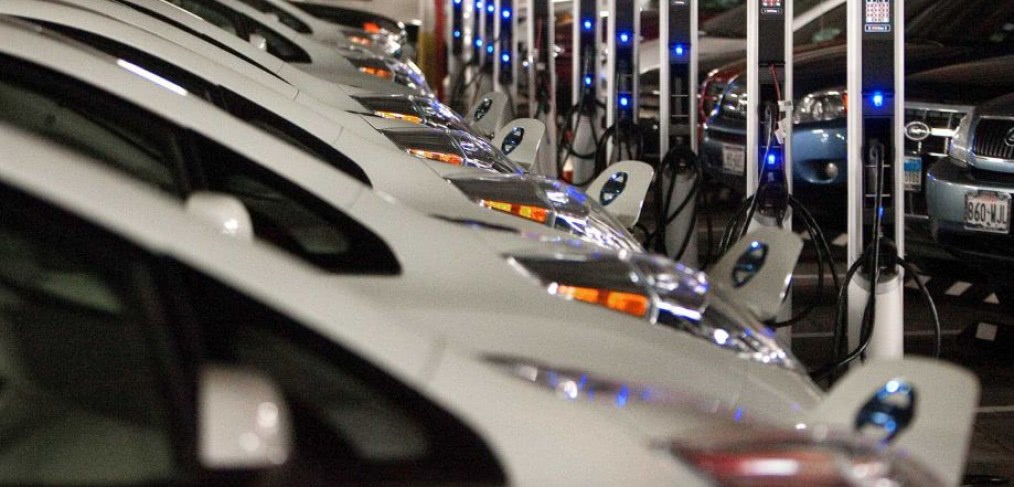
A Nostalgia for Noise
Like many pedestrian environments, the waterfront community of Fells Point, Baltimore, where RTKL’s headquarter office is located, is patrolled by police on Segway-style vertical scooters. I know this because while I recently window-shopped during a warm January lunch break, I was almost run over by one. I never heard the vehicle come up behind me and barely avoided a side-swipe.
Funny that this occurred on the same day the Federal government released a proposed “quiet-car rule.” The rule, by the National Highway Traffic Safety Administration (NHTSA), will require electric and hybrid vehicles traveling at speeds below 18 mph to emit “an alert sound that is recognizable as motor vehicle in operation.” The reason for the rule? Electric vehicles and hybrids are 20 percent more likely than non-hybrid vehicles to be involved in a low-speed accident with a pedestrian. Quiet may be the culprit.
Automotive noise is usually considered one of the banes of public spaces. One of the things that make our walkable communities, well, walkable, is the sound ambience. Urban designers pay attention to this, often considering sound strategies that absorb or mask traffic noise or invite a natural sound-shape—the chatter of friendships. The breath of weather. The splash of fountain water. So of course this new NHTSA rule requires that electric and hybrid-vehicle alert sounds must be audible above ambient sounds. Most importantly, it must be recognizable as automotive.

Ironic, maybe, that sound engineering is in the arsenal of automotive designers too. Designers of today’s lighter and more efficient vehicles are re-introducing noise in order to recapture the auditory performance of vehicles. Not for safety reasons, but for such acoustic pleasures as the throated growl of acceleration. At some point the twain shall meet— just as we are eliminating more and more cars from our spaces for energy reasons, the crafted sounds of automobiles may become as pleasurable and welcome to the pedestrian as they are to the driver. Will we miss them?
Listen to the fourteen sample “alert noises” relative to ambient noise as proposed by the NHTSA, and find out how to comment on the proposed rule of these sounds.
Images: Houston Chronicle, Library of Congress

Excellent, Helen. You may know the nonprofit Right to Quiet Society, which declares, “We want our homes to be havens from unwanted noise, and we ask that the soundscape of our public spaces, like the air we breathe, be respected.” As new technologies combat noise pollution by removing unplanned sounds from public space, we have an opportunity to introduce planned (and pleasant) sound. Alarms on electric vehicles are the equivalent of trucks beeping when they back up. What can sound designers offer that can ensure safety but also comfort? Instead of “white noise,” call it “green noise.”
Thanks Helen, it’s an interesting topic that’s only going to become more relevant in the coming years.
Lance, interesting choice of terms, white noise versus green noise. If all of the noise in our environment were white noise it would undoubtedly be more green than what we have today. White noise is by definition noise that contains equal sound power at every frequency. This stands in contrast to tonal noise like the squeal of brakes locking up, the honk of a horn, or the beep of a car locking, none of which have much broad spectrum energy. Additionally, the sounds described above are typically abrupt having a sudden start and stop.
Audiologists and acousticians have long known that sounds that have sharp peaks in frequency or abrupt starts and stops are more noticeable and more likely to be objectionable than broad spectrum noise. This is why we use constant pink noise, a twist on white noise, in sound masking, to make the background noise, “disappear”. You’ll these criteria, broad spectrum and not abrupt, essentially describe the noises in nature that we already recognize as being peaceful, noises like wind, rain, and flowing water. All of these are sounds that are relatively broad spectrum and if not constant, at least gently shifting.
So maybe the greenest thing to do is to shoot for having all of the sounds in the soundscape be as white as possible!